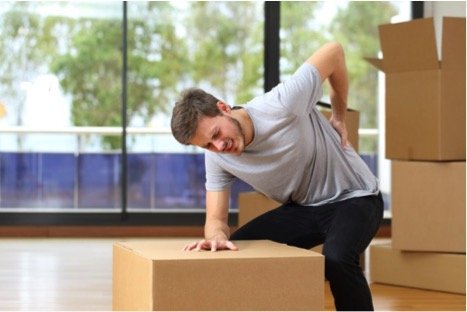The Most Common Work-Related Injuries and How to Avoid Them

Regardless of whether you work in an office, a factory, or on a farm, you probably know that work-related injuries and accidents can and do happen—you probably just assume they'll never happen to you. However, with almost 3 million nonfatal injuries occurring in the U.S. each year, it's best to assume some risk is involved in your workplace and prepare accordingly. From keeping an eye out for situations where you might trip to battling the desire to overexert yourself, work-related injuries are no joke. Here are some of the most common work-related injuries and how to avoid having them happen to you and the people with whom you work.
Overexertion
While you may be able to laughingly chalk it up to no longer being young, overexertion poses a real threat in most work environments, and it's the leading cause of injury on the job. From pulling and pushing to lifting and carrying, exerting one's physical body past the point of comfort and safety happens in almost every environment. To avoid overexerting yourself, it's important to know your limits and to also never move, lift, carry, push, or pull something when you're in a hurry.
Beyond that advice, ask for assistance even when you don't think you need it, and if a manager or foreman asks you to do work you aren’t comfortable doing—and you get injured while doing it—don't stay silent. Whether you're from the Windy City and need to look into hiring a Chicago personal injury lawyer or you're from Beantown and need a lawyer, some injuries need legal help in addition to medical help.
Slips and Trips
It doesn't take much for a surface to suddenly become unsafe, even in environments that seem innocuous. Rainy days can gather puddles near doors. A spill from a coffee mug just outside an elevator can create a hazard.An unnoticed ream of paper that fell off a cart at the end of the work day yesterday can trip the first worker in in the next morning. In all situations, it's important to keep your eyes peeled and your attention sharp, and whenever you see anything that could cause someone to slip or trip, take care of it or alert someone who can.
Actual Falls
Ironically, many of the same scenarios that cause workers to slip and trip can also lead to more serious falls. Obstacles, spills, faulty equipment, poor weather conditions, bad lighting—the reasons why people might fall are many.To protect yourself and ensure your workers and co-workers stay safe from falls, see to it that guard rails are installed where necessary, and make sure employee work areas are always properly lit. Employee training is also a great aid in reducing falls.
Walking Into Things
While walking into something might seem, at first glance, to be mostly cause for embarrassment, it's one of the primary ways people get injured on the job. Accidentally running into a static object, whether it's a piece of furniture, a glass door, or a wall, can result in significant neck, head, knee, and foot injuries. To avoid this potential problem, make sure employee workspaces are both clear of obstacles and tidy so that employees aren't distracted by a mess when moving about. Also, make sure that potential hazards are well-marked. Again, training is also a big help in keeping workers from walking into things, too.
Vehicle Accidents
If you or any of your employees drive a company car—or any of you drive your own vehicles while performing your jobs—vehicle accidents are an inevitableworkplace hazard. More than 5 million automobile accidents occur on U.S. roads each and every year, and some of these are work-related. To protect yourself and your employees, provide adequate and regular training that emphasizes the importance of paying attention, limiting distraction, and practicing defensive driving techniques.
Violence
Whether due to office politics or arguments that get out of hand, physical violence is also sometimes the cause of workplace injuries. To avoid this troubling reality in your work environment, make sure violence prevention training is a part of every employee's orientation. Create and maintain channels for easy communication if an employee is threatened or feels uncomfortable, and above all, treat everyone in the workplace with kindness and respect.
Work-related injuries are going to happen, but if you're aware of the risks and what to do about them, you can at least reduce your risk.
More to Read:
Previous Posts:










